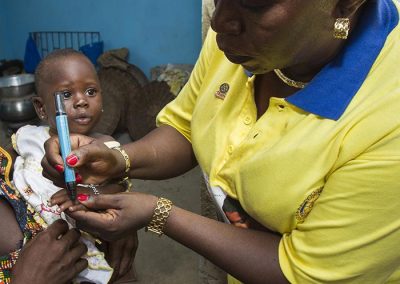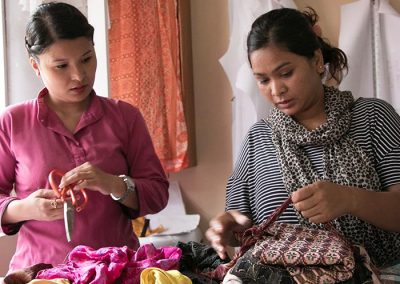
Welcome to Rotary in District 5330. We represent Rotarians in Southern California in Riverside and San Bernardino Counties. Rotary unites over a million people worldwide to take action locally and globally. Each day, our members pour their passion, integrity, and intelligence into completing projects that have a lasting impact. We persevere until we deliver real, lasting solutions.
CLUBS
MEMBERS
%
PEOPLE OF ACTION
WHO WE ARE
Rotary is a global network of 1.2 million neighbors, friends, leaders, and problem-solvers who see a world where people unite and take action to create lasting change – across the globe, in our communities, and in ourselves.
Solving real problems takes real commitment and vision. For more than 110 years, Rotary’s people of action have used their passion, energy, and intelligence to take action on sustainable projects. From literacy and peace to water and health, we are always working to better our world, and we stay committed to the end.
Learn more about our structure and our foundation and our strategic vision.
What we do
Rotary members believe that we have a shared responsibility to take action on our world’s most persistent issues. Our 35,000+ clubs work together to:
- Promote peace
- Fight disease
- Provide clean water, sanitation, and hygiene
- Save mothers and children
- Support education
- Grow local economies
- Protect the environment
Our mission
We provide service to others, promote integrity, and advance world understanding, goodwill, and peace through our fellowship of business, professional, and community leaders.
Vision statement
Together, we see a world where people unite and take action to create lasting change — across the globe, in our communities, and in ourselves.
We are opportunity-creators
Rotary members look for opportunities to improve our communities today and invest in the next generation for tomorrow.
We are problem-solvers
Together, we apply our professional experience and personal commitment to tackle our communities’ most persistent problems, finding new, effective ways to enhance health, stability, and prosperity across the globe.
We are people of action
We connect passionate people with diverse perspectives to exchange ideas, forge lifelong friendships, and, above all, take action to change the world.
OUR CAUSES
Rotary is dedicated to causes that build international relationships, improve lives, and create a better world to support our peace efforts and end polio forever..
Promoting Peace
Rotary encourages conversations to foster understanding within and across cultures. We train adults and young leaders to prevent and mediate conflict and help refugees who have fled dangerous areas.
Fightingdisease
We educate and equip communities to stop the spread of life-threatening diseases like polio, HIV/AIDS, and malaria. We improve and expand access to low-cost and free health care in developing areas.
Providing Clean Water, Sanitation and Hygiene
We support local solutions to bring clean water, sanitation, and hygiene to more people every day. We don’t just build wells and walk away. We share our expertise with community leaders and educators to make sure our projects succeed long-term.
Saving mothers and children
Nearly 6 million children under the age of five die each year because of malnutrition, poor health care, and inadequate sanitation. We expand access to quality care, so mothers and their children can live and grow stronger.
Supporting education
More than 775 million people over the age of 15 are illiterate. Our goal is to strengthen the capacity of communities to support basic education and literacy, reduce gender disparity in education, and increase adult literacy.
Growing Local Economies
We carry out service projects that enhance economic and community development and create opportunities for decent and productive work for young and old. We also strengthen local entrepreneurs and community leaders, particularly women, in impoverished communities.
DIVERSITY, EQUITY AND INCLUSION
At Rotary, we understand that cultivating a diverse, equitable, and inclusive culture is essential to realizing our vision of a world where people unite and take action to create lasting change.
We value diversity and celebrate the contributions of people of all backgrounds, across age, ethnicity, race, color, disability, learning style, religion, faith, socioeconomic status, culture, marital status, languages spoken, sex, sexual orientation, and gender identity as well as differences in ideas, thoughts, values, and beliefs.
Recognizing that individuals from certain groups have historically experienced barriers to membership, participation, and leadership, we commit to advancing equity in all aspects of Rotary, including in our community partnerships, so that each person has the necessary access to resources, opportunities, networks, and support to thrive.
We believe that all people hold visible and invisible qualities that inherently make them unique, and we strive to create an inclusive culture where each person knows they are valued and belong.
In line with our value of integrity, we are committed to being honest and transparent about where we are in our DEI journey as an organization, and to continuing to learn and do better.
2025-2026 RI PRESIDENT


Francesco Arezzo
President 2025-26
Rotary Club of Ragusa
Italy
Francesco Arezzo is an orthodontist in private practice. He is active internationally as a member of the Italian, European, and American orthodontics associations. He is vice president of the National Association of Italian Dentists for the province of Ragusa and was the founder and head for seven years of the delegation for Ragusa of the National Trust for Italy. He is a Knight of Honor and Devotion in Obedience within the Sovereign Order of Malta.
A Rotary member for more than 30 years, Arezzo has served as vice chair of the Joint Strategic Planning Committee and as RI director, learning facilitator, and as district conference presidential representative.
Arezzo is a Major Donor and Benefactor of The Rotary Foundation. He is married to Anna Maria Criscione, an entrepreneur in the tourism field. They have two children.
















